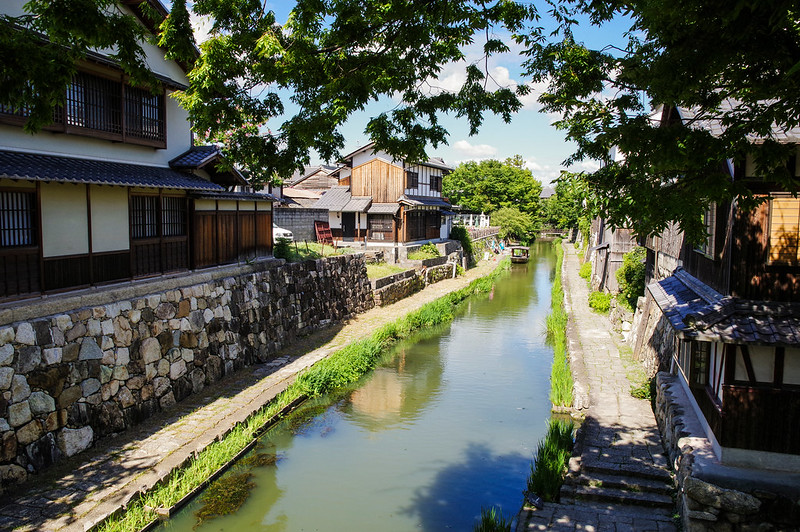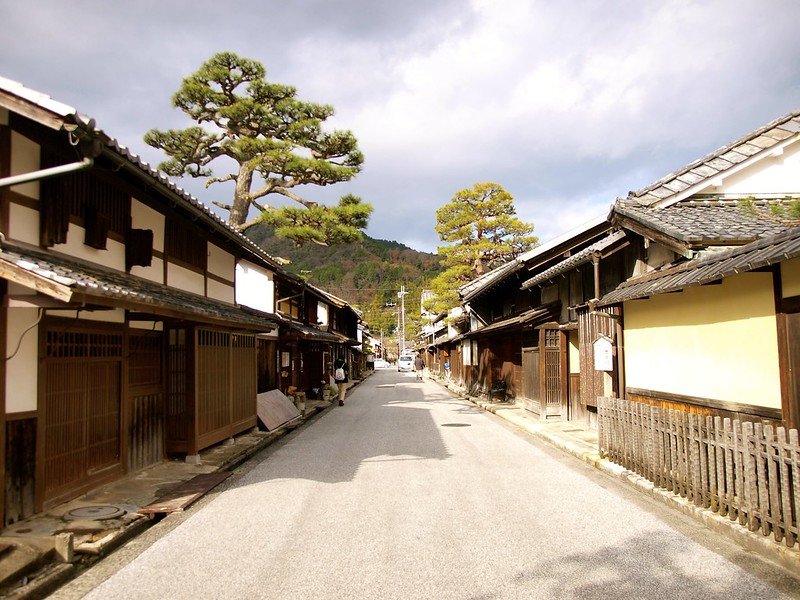
A Glimpse of the Past in Ōmihachiman
Ōmihachiman, a quaint city in Shiga Prefecture, is nestled at the foot of Mount Hachiman-yama right in the center of Shiga. Ōmihachiman is known as a castle town because of the castle that crowns it: Hachiman-yama-jo. Its castle was built in 1585 in the eastern shore of Lake Biwa, Japan’s largest lake.
Fairly recently, on the 21st of March, 2012, the town Azuchi (of Gamō District) merged with the city to create the current city of Ōmihachiman.
The streets of the city are lined with pine trees and the homes of residents have udatsu: roof tops of unusual shapes. The Hachiman-bori area, the center of ship transport at one time, is being maintained as a nationally important preservation district for the group of historic buildings in Japan.
Streets at Omihachiman, Shiga.
Ōmihachiman was a commercial town since Toyotomi Hidetsugu built the castle that attracted merchants. The city was divided in the north by a residential area called Hachiman-bori, specifically for warriors. The southern area was for regular townfolk and was further divided between craftsmen and merchants until the mid-19th century.
In 1905, American architect William Merrell Vories arrived in the city as an English teacher and fell in love with Ōmihachiman.
Fully bloom cherry blossoms by the Omihachiman moat
His architectural influence can be seen in some Western-style buildings that still stand. Shin-machi-dori Street is the merchants’ area; the Nishikawa House used to be the residence of a wealthy merchant family. Other historical places to visit in the area are Local Artifacts Museum, History and Folklore Museum, Kawara Museum, and the white walled store houses and old houses such as the Haku-un-kan, along the Hachiman-bori.
You can also enjoy a cruise on a houseboat that will take you on an unforgettable scenic tour of nature’s wonders along Lake Biwa.
In spring, you can marvel at the gorgeous foliage in full bloom. If you are wondering what life in Japan was like in the olden times, Ōmihachiman will give you a glimpse of life in times gone by, in all its preserved beauty.


